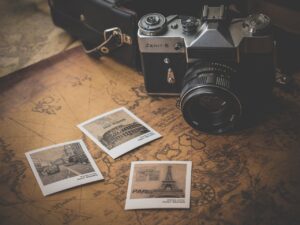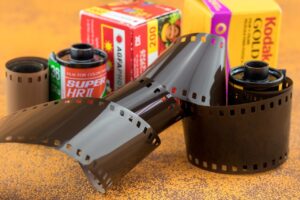CTR Photography
Film photography is a captivating process that involves capturing images on light-sensitive film, as opposed to relying on digital sensors. In this traditional method, the film acts as the medium that records the scene when it is exposed to light through a camera lens. Following exposure, the film undergoes a chemical development process to reveal the images.
One of the remarkable aspects of film photography is the unique qualities it produces, such as a characteristic grain and a rich range of tones. Many photographers value these features for their artistic appeal, making film photography not just a method, but also an expressive art form. It offers a variety of styles and techniques, including black and white photography, which utilizes shades of gray to create striking images and convey emotion. This artistic medium invites exploration and creativity, allowing photographers to tell compelling stories through their work.

To embark on your journey into film photography, consider these constructive steps and essential tools:
1. **Select Your Camera**: Start with a film camera that appeals to you. Explore various formats, such as 35mm for classic versatility, medium format for stunning detail, or large format for extreme precision, and choose one that fits your vision and budget.
2. **Choose Your Film**: Familiarize yourself with different types of film—black and white, color negative, or slide film. Each has distinct qualities and will influence the aesthetics of your work, so experiment to find what resonates with you.
3. **Invest in Lenses**: Depending on your camera system, consider acquiring a few lenses. A standard lens is a great foundation, but additional lenses can expand your creative possibilities in composition and style.
4. **Utilize a Light Meter**: While many cameras come with built-in light meters, having a handheld light meter can enhance your ability to gauge exposure in challenging lighting situations.

5. **Learn About Development**: If you’re interested in developing your own film, gather the necessary supplies such as developing tanks and chemicals. Alternatively, consider using a film lab for processing, which can save you time as you focus on shooting.
6. **Plan for Digitization**: If you wish to digitize your images, invest in a quality scanner or find a reliable lab that offers scanning services to bring your negatives into the digital realm.
7. **Consider a Darkroom**: If printing your work excites you, think about setting up a darkroom. Equip it with an enlarger, printing paper, and other essential tools to explore the art of printmaking.
8. **Keep a Photography Journal**: Maintaining a notebook can greatly enhance your learning experience. Document your settings, thoughts, and observations after each shoot to track your development and refine your skills over time.
9. **Explore Learning Resources**: Take advantage of books, online courses, and tutorials that can deepen your understanding of film photography, from shooting techniques to development processes.
10. **Engage with the Community**: Connect with fellow film photographers through clubs, workshops, or online forums. Sharing experiences and insights with others can provide encouragement and fresh perspectives.
Remember, patience and practice are key in film photography.
Embrace the learning curve, and enjoy the creative journey as you develop your unique artistic voice!
